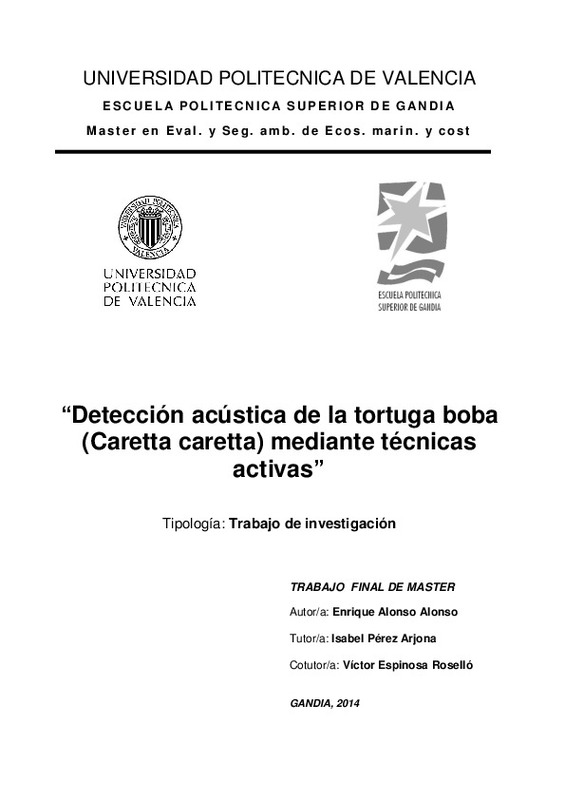JavaScript is disabled for your browser. Some features of this site may not work without it.
Buscar en RiuNet
Listar
Mi cuenta
Estadísticas
Ayuda RiuNet
Admin. UPV
Detección acústica de la tortuga boba (Caretta caretta) mediante técnicas activas
Mostrar el registro completo del ítem
Alonso Alonso, E. (2014). Detección acústica de la tortuga boba (Caretta caretta) mediante técnicas activas. Universitat Politècnica de València. http://hdl.handle.net/10251/44900
Por favor, use este identificador para citar o enlazar este ítem: http://hdl.handle.net/10251/44900
Ficheros en el ítem
Metadatos del ítem
| Título: | Detección acústica de la tortuga boba (Caretta caretta) mediante técnicas activas | |||
| Autor: | Alonso Alonso, Enrique | |||
| Director(es): | ||||
| Entidad UPV: |
|
|||
| Fecha acto/lectura: |
|
|||
| Resumen: |
Sobre una especie protegida, como son las tortugas marinas, para comprobar el éxito de los protocolos de protección y estimar el estado de conservación, es necesaria la realización de censos. Actualmente se realizan ...[+]
In order to check the success of protection protocols and estimate the condition of protected species such as sea turtles, censuses are necessary to be done. Nowadays, the censuses have been performed by extrapolating from ...[+]
|
|||
| Palabras clave: |
|
|||
| Derechos de uso: | Reconocimiento - No comercial - Sin obra derivada (by-nc-nd) | |||
| Editorial: |
|
|||
| Titulación: |
|
|||
| Tipo: |
|
recommendations
Este ítem aparece en la(s) siguiente(s) colección(ones)
-
EPSG - Trabajos académicos [5023]
Escuela Politécnica Superior de Gandia







